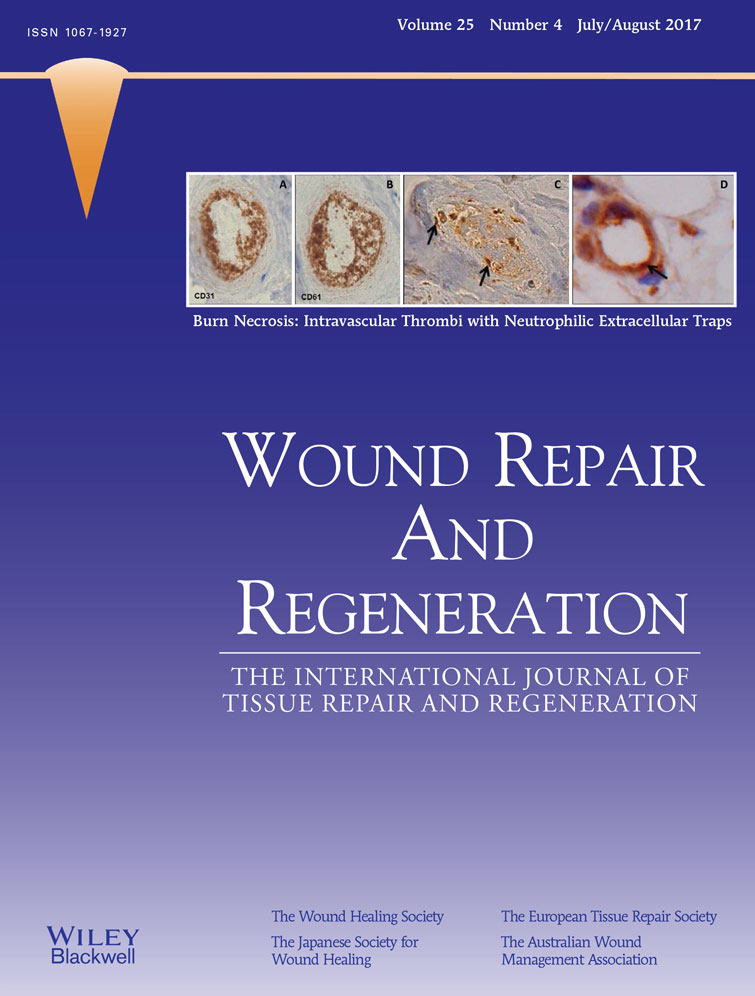Scar formation following excisional and burn injuries in a red Duroc pig model
Abstract
Scar research is challenging because rodents do not naturally form excessive scars, and burn depth, size, and location cannot be controlled in human longitudinal studies. The female, red Duroc pig model has been shown to form robust scars with biological and anatomical similarities to human hypertrophic scars. To more closely mimic the mode of injury, recreate the complex chemical milieu of the burn wound environment and enhance scar development, an animal model of excessive burn-induced scarring was developed and compared with the more commonly used model, which involves excisional wounds created via dermatome. Standardized, full-thickness thermal wounds were created on the dorsum of female, red Duroc pigs. Wounds for the dermatome model were created using two different total dermatome settings: ∼1.5 mm and ≥ 1.9 mm. Results from analysis over 150 days showed that burn wounds healed at much slower rate and contracted more significantly than dermatome wounds of both settings. The burn scars were hairless, had mixed pigmentation, and displayed fourfold and twofold greater excess erythema values, respectively, compared with ∼1.5 mm and ≥ 1.9 mm deep dermatome injuries. Burn scars were less elastic, less pliable, and weaker than scars resulting from excisional injuries. Decorin and versican gene expression levels were elevated in the burn group at day 150 compared with both dermatome groups. In addition, transforming growth factor-beta 1 was significantly up-regulated in the burn group vs. the ∼1.5 mm deep dermatome group at all time points, and expression remained significantly elevated vs. both dermatome groups at day 150. Compared with scars from dermatome wounds, the burn scar model described here demonstrates greater similarity to human hypertrophic scar. Thus, this burn scar model may provide an improved platform for studying the pathophysiology of burn-related hypertrophic scarring, investigating current anti-scar therapies, and development of new strategies with greater clinical benefit.




